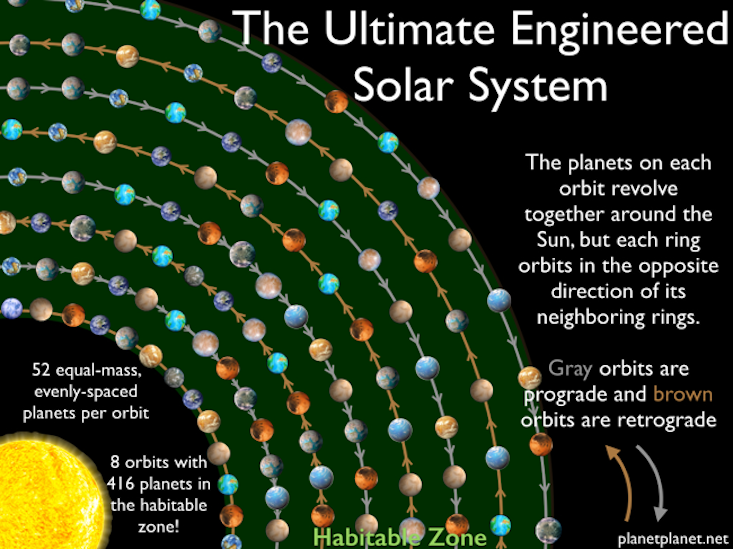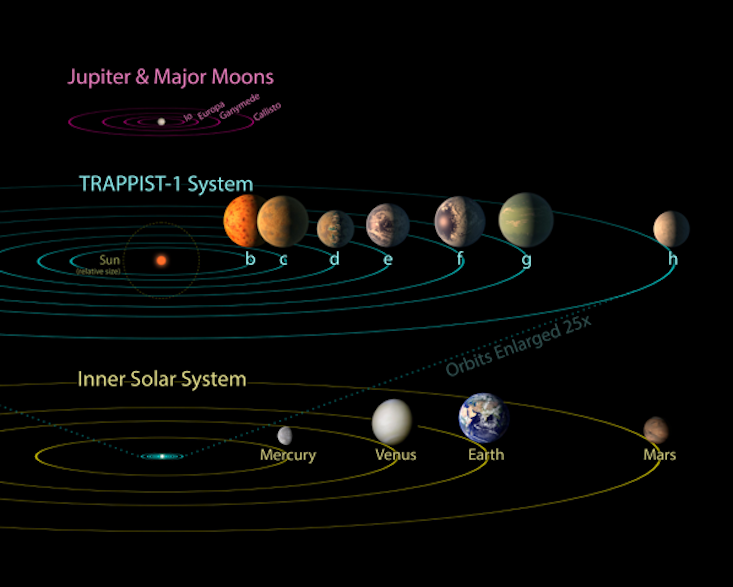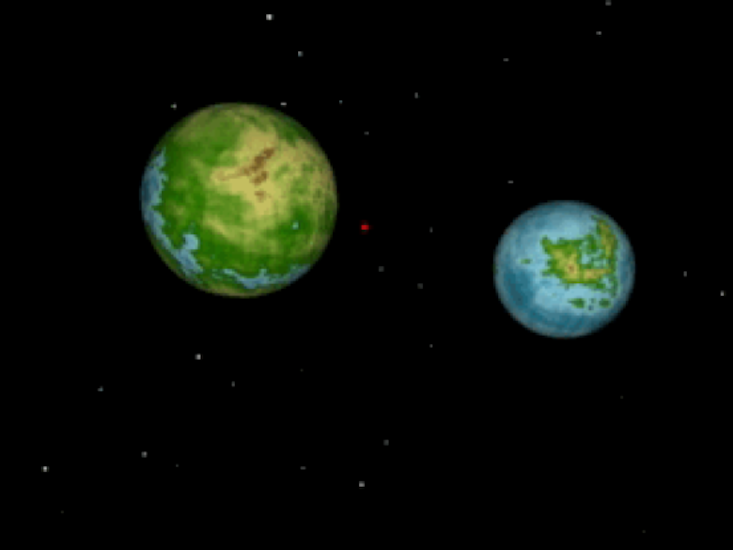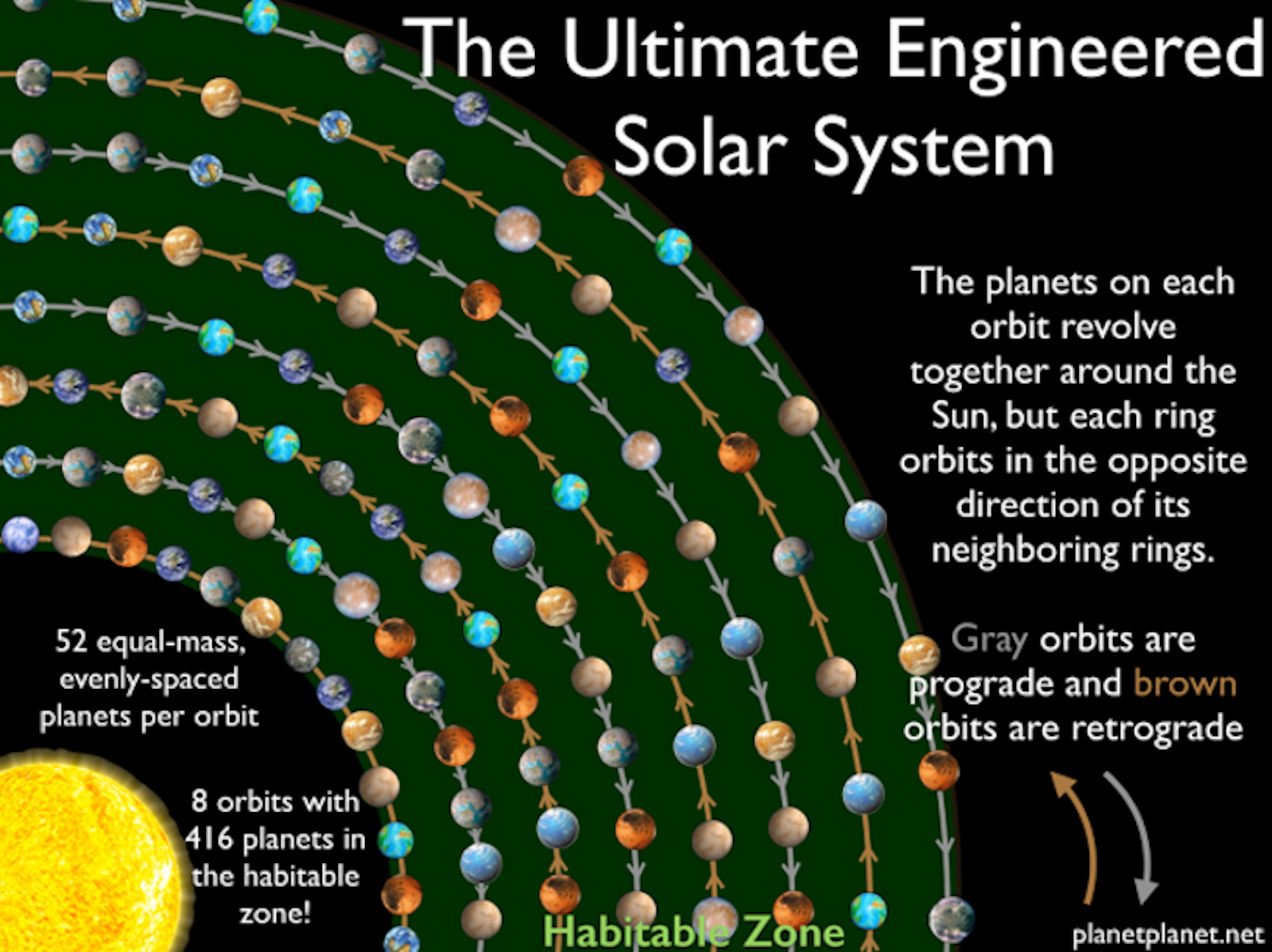
When Frank Drake was a boy, growing up in 1930s Chicago, his parents, observant Baptists, enrolled him in Sunday School. By the time he was 8 years old, he suspected his religion, and others around the world, were, to some extent, environmentally determined—local chance events helped shape them. He began to think the same might be true of civilization, for humans and, perhaps, aliens as well—but he thought it better to keep these thoughts to himself.
But not for long: He would go on to found S.E.T.I., the Search for Extraterrestrial Intelligence, and laid out a simple way to estimate the number of civilizations within our galaxy that we could hope to listen-in on. It’s an equation that looks like this:
N (the number of communicable civilizations in the Milky Way)
= R (the rate at which stars form)
× NEarth (the fraction of stars with Earth-sized planets on Earth-like orbits)
× FLife (the fraction of those planets that develop life)
× FIntelligence (the fraction with intelligent life)
× FCommunication (fraction that can communicate)
× L (the average civilization’s lifetime)
In short, N = R × NEarth × FLife × FIntelligence × FCommunication × L. To determine the value of N, we just need to know the other numbers.
We know that the Milky Way makes a couple of new stars per year, so R is taken care of—but that’s it. We have no idea how common life, intelligence, or the ability to communicate are. And while we may all be rooting for the average civilization’s lifetime to be very long, we have no data.
But we are making progress on NEarth (also called “Eta-Earth”). The first Earth-sized planet orbiting another sun was discovered in 2010. Thanks in large part to NASA’s Kepler Space Telescope, we now know of hundreds of Earth-sized worlds, and a handful as small as Mars and Mercury.
Kepler’s primary mission was to determine the abundance of Earth-sized planets orbiting at Earth-like distances around Sun-like stars. This is just NEarth for stars like our sun. But NEarth might be different for different types of stars. Unfortunately, by 2013, Kepler lost two reaction wheels—essential for pointing the telescope—and had to abandon its primary mission after acquiring about four years’ worth of data. Kepler has good statistics on planets orbiting suns on Mercury-like orbits but not Earth-like. Bummer. (A few years ago Kepler was reincarnated in a new mode called K2, still finding planets but without hope of measuring NEarth.)
But I’m hoping for some super-habitable systems with 10, 20, or hundreds of potentially life-bearing planets.
The habitable zone is the ring around a star where the conditions are right for liquid water on a planet’s surface to exist. Those are the planets counted in NEarth. But different stars have different habitable zones: Those of red dwarf stars, cooler and fainter than our sun, are much closer; and those of brighter, hotter stars are farther out. Kepler succeeded in estimating NEarth for red dwarf stars since, for these stars, measuring Mercury-sized orbits works well enough: at least a sixth of red dwarf stars—and up to half—has an Earth-sized planet in the habitable zone. Not too shabby, red dwarfs!
A few months ago, astronomers announced the discovery of the spectacular TRAPPIST-1 7-planet system. Its central star is puny, just 8 percent the mass of our sun, 2,000 times fainter, and about the size of Jupiter. All seven planets are roughly Earth-sized, and they orbit extremely close to their star. The most exciting thing is, at least three (and perhaps up to four or five) live in the star’s habitable zone—if all stars had planetary systems like TRAPPIST-1, NEarth would be 3. Another twist is that, in the TRAPPIST-1 system, life—if there is any—may naturally spread between planets: The compact orbital setup is well-suited for panspermia. If an asteroid or comet hit any of the potentially life-bearing TRAPPIST-1 planets, some of the debris would scatter to the six, raining down space-born seeds.

It is remarkable to imagine NEarth being larger than one. It might make you wonder: Could there be super-TRAPPIST-1 systems out there with not three or four, but 10 or 20 planets in the habitable zone? What is the most planets a star can have there? We can answer this question precisely. Since we know how gravity works, and how orbits evolve, we have the tools we need to figure out the sardine-iest configuration of planets that can stably fit in a star’s habitable zone.
We need to choose what type of star we want (doesn’t matter much), and what size planets we’re interested in. Then we can break the problem down into two questions: First, how wide is the habitable zone? Second, how tightly can we pack planetary orbits?
The habitable zone is much more complicated than usually discussed. It depends on what a planet is made of, and the thickness and makeup of its atmosphere. According to models, Earth is near the inner edge of the sun’s habitable zone, which extends from 95 percent of Earth’s orbit out past Mars’ orbit (meaning that Earth, on Mars’ orbit, could retain its liquid water)! With a strongly heat-retaining atmosphere the outer edge of the habitable zone might be much farther away, and in some situations even free-floating planets in interstellar space could retain liquid water. However, in those cases life would be hidden beneath such a thick layer of gas (or ice) that we likely couldn’t detect it.
Planets’ orbits can be spaced in two different ways. The orbits of adjacent planets can be resonant, as is the case for the TRAPPIST-1 planets, a handful of other known systems, and Jupiter’s closest large moons. Or the planets can be out of resonance, as is the case for most of the known systems of super-Earths and our own solar system planets. Resonance simply means that the orbits of adjacent planets re-align periodically. Resonances are described by a ratio of integers. For example, a 2:1 resonance means that every time the outer planet completes one orbit the inner one has completed two.
There is a nice animated gif of Jupiter’s moons in resonance here. Planets spaced by resonances render their masses irrelevant. The spacing is simply determined by which resonances the planets are in. Resonances like 2:1 and 3:2 imply more widely spaced orbits than resonances like 7:6 or 9:8. Of course, not all resonances are stable. With TRAPPIST-1-like orbital spacing (3:2 resonances), four orbits fit comfortably within the habitable zone.

On the other hand, if planets are not spaced by resonances, then their masses do matter. Below is an example of maximal orbit-packing into the habitable zone for three different-mass planets. For Mars-mass planets (10 percent of Earth’s mass), 14 orbits fit within the habitable zone; but for Neptune-mass planets (around 10 times Earth’s mass) only three orbits fit.

Fourteen Mars-mass planets can fit in the habitable zone, but Mars (at least today) is a lifeless rock. To hold on to an atmosphere and to maintain plate tectonics for billions of years, a planet must be a little larger, arguably at least about 30 percent Earth’s mass. So planets about half of Earth’s mass are a good compromise between orbital spacing and life potential.
Here come two more twists. First, two planets can share the same orbit around the star! These are called Trojan pairs (and are not to be confused with the condoms). This almost doubles the number of planets that can fit on a given orbit.

The second twist is binary planets. Our moon is almost half the size of Earth, and Charon is almost as big as Pluto. It is entirely plausible to imagine two Earths orbiting each other. It would look something like this:

We can use these ingredients to build a pretty awesome solar system. On my blog I call this Ultimate Solar System 1. Here is what it looks like:

There are six stable orbits within the habitable zone. Each contains four planets: two binary Earths in Trojan configurations. This setup is stable and packs 24 planets within the habitable zone. Imagine the panspermia in this system! If life developed on any of the planets, the inevitable impact debris would certainly spread life across the whole system. This would be a pretty extreme system to form in nature, but all the pieces are completely plausible—and do happen. The trick is that they all need to happen in the same system.
What about Ultimate Solar System 2 or 3? It turns out that there are a bunch of variations on this theme. You can use planet formation theory to build planetary systems of all shapes and sizes. And this rabbit hole is deep (click here to see).
I’ll jump ahead to the grand finale. Using a couple of orbital dynamics tricks, I built a planetary system with 416 planets in the habitable zone.

This system is completely stable—I double-checked with computer simulations. But nature would have a tough time forming this system. If it exists, it could only have been built by a super-advanced civilization. That’s why I call it the Ultimate Engineered Solar System.
Imagine the stories you could tell in these Ultimate Solar Systems! Each binary planet has a close neighbor hovering larger than the moon in the sky. The night sky has an amazing wealth of wandering stars, the other planets tracing paths as they orbit the star.
Back to NEarth. We astronomers are happy to have measured that up to half of the stars in the Milky Way appear to host Earth-sized planets in the habitable zone (NEarth is up to 50 percent for red dwarfs, the dominant stars in the galaxy by number). TRAPPIST-1 is a great example that goes even further and packs three planets in the habitable zone. But I’m hoping for some super-habitable systems with 10, 20, or hundreds of potentially life-bearing planets. They are sure to be low probability systems, but with five hundred billion stars in our galaxy (and sci-fi fans crossing their fingers) it’s definitely worth looking!
Sean Raymond is an astronomer studying the formation and evolution of planetary systems. He also blogs at planetplanet.net.
WATCH: The astronomer Daniel Wolf Savin on the most practical astrophysics application.































